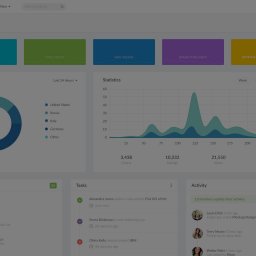Your target market’s needs play an imperative role when it comes to the development of a quality mobile app. However, a study shows quite a significant disconnect between those needs and mobile app features. There’s less focus on providing seamless user experience and more on integration of latest tech stack into the apps, resulting in poor product performance.
Now here’s the questions: How can we bridge the gap between clients’ engrossment and mobile app attributes? Is there some magic formula?
The answer is “No”.
However, we do have a set of standards and ground rules, which can ensure a quality output that makes your clients satisfied and users happier.
Let’s have a look at those ideas.
1. Design a Scalable App
The first rule of app development is to think futuristically and design an app for the maximum number of audiences. A mobile app with scalable architecture can grow organically with growing traffic and user base. It ensures the same seamless user experience irrespective of number of users.
Scalability works two ways:
- Vertical
- Horizontal
When more processing power, memory or disk resources is added to a single server it is called vertical scaling whereas when additional computing resources are added in parallel then it is called horizontal scaling.
To facilitate mobile app scalability, load balancing application request needs to be conducted over the web server tier as well as load balancing is required over the database tier.
When the number of users increases on an app, its performance typical deteriorates which make users abandon the app. Conversely, if we develop it with scalability in sights, it retains and delivers same user experience irrespective of the number.
2. Put User Experience First
The customers always want to go through product scanning stage prior to placing an order. This possibility only arises when you assist them in narrowing down the products. Many apps have come up with filters and sorting options that curtail the work for customers and maximize the company’s profitability.
In addition to this, putting in these filters in the design also makes a difference in terms of user experience. It is suggested that displaying most relevant filters on the top make things simpler for the user.
We first experimented this in one of our projects with VBO Tickets, where our team implemented filters and categories to let users design their own user experience and see the relevant cinema content.
3. Employ Fluid Responsiveness
While we are all aware of the crucial role that responsive designs play in attracting and retaining prospects. Since you have no authority over the mobile devices that your customers are using to access your app,
You are advised, not to take the chance of losing the attention of your consumer while switching mobile devices as their experience will decide on success or failure of your mobile app.
In the recent times, an innovative term has transformed the way we develop and design mobile apps. It has been named as “Fluid Responsive”, which guarantees that app does not just effectuate in the assortment of single Operating System (OS), but also regulates impeccably to other screens.
This not only helps in proper functioning of the app but also protects aesthetical elements as fluidity confirms that the visuals, manuscript, and layouts are self-adjustable.
Modern Perspective of Customer Experience. https://t.co/NW6vg7iwpp#business #customerservice #marketing #sales #research pic.twitter.com/mHGQim4LyN
— IQVIS (@TeamIQVIS) January 19, 2017
Integrate Deep Analytics
By collecting and interpreting data on user behavior, businesses can see how their app’s design influences that behavior, as well as how that behavior drives usage. Once they’ve reached an understanding of any patterns, they can use this information to predict behavior and act accordingly. The app design can be reworked to better suit this anticipated behavior.
On the clients’ side, this will help their businesses clues about the probable problems before they turn critical. App’s reliability levels become apparent through the data collected, as well as the necessity for any maintenance.
From a customer experience perspective, this ability to prevent problems from affecting usage pattern is invaluable in protecting a client’s investment in app development. If you deliver intelligent mobile apps, you’ll retain your clients for quite a long time.
Ensure Maximum App Security
Mobile users demand instant anytime/anywhere access, uncompromised convenience, and intuitive functionality on all devices. In addition, they also aspire to enjoy a secure mobile experience on the go.
Hence, it becomes the responsibility of app developer and enterprise (that sells it) to prevent customer information getting into the hands of adversaries that see the mobile environment as an irresistible target of opportunity.
Owing to soaring hacking incidents, it has become vital for app developers to ensure the highest level of app security. Particularly, if you are developing an enterprise application that transfers critical and confidential business data and information, ensure proper user authentication and UX design that guarantees the security of sensitive data.
Conclusion
Mobile app usage has expanded to leaps and bounds in the last decade. In USA alone, over 92 percent people own a smartphone and 62 percent of them uses phones to purchase goods and services. However, people retain only those apps that offer the best features, user experience, and security.
If you are a business and planning to come up with your own mobile app, we strongly recommend you to hire highly knowledgeable, experienced, and creative app developer.














